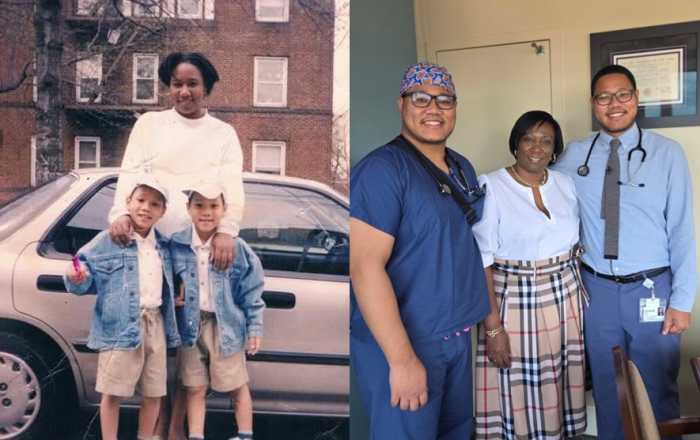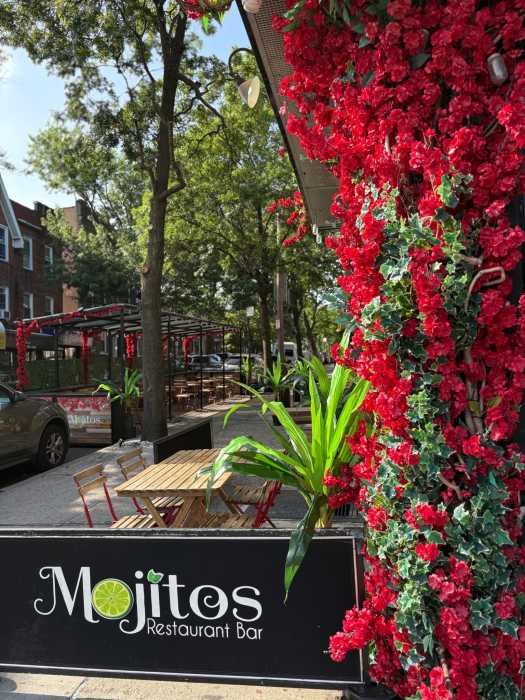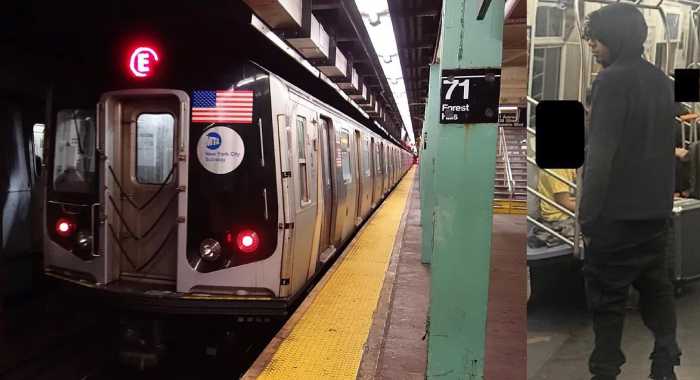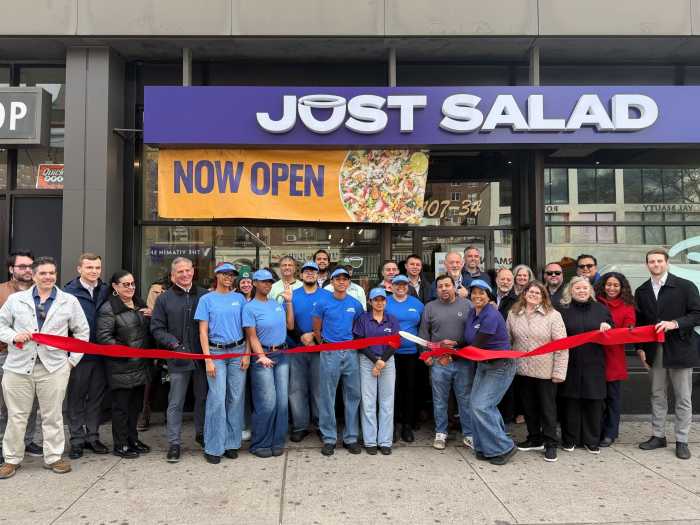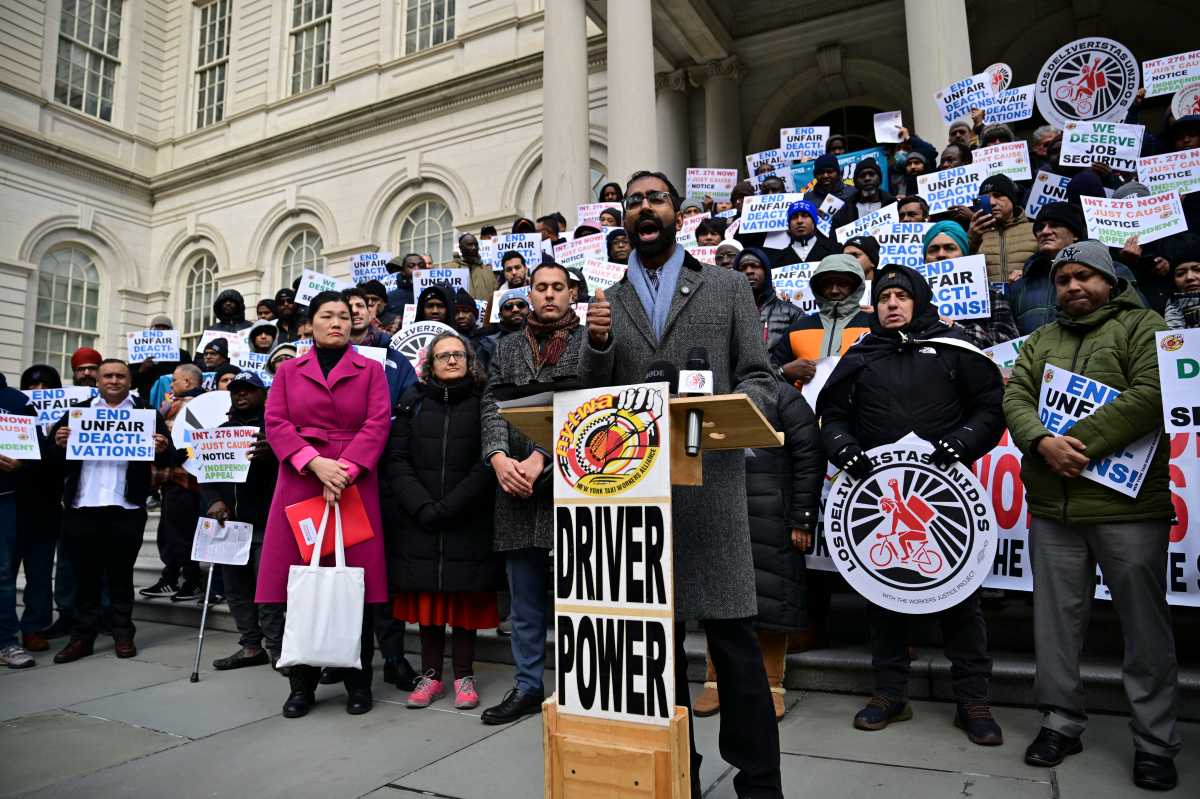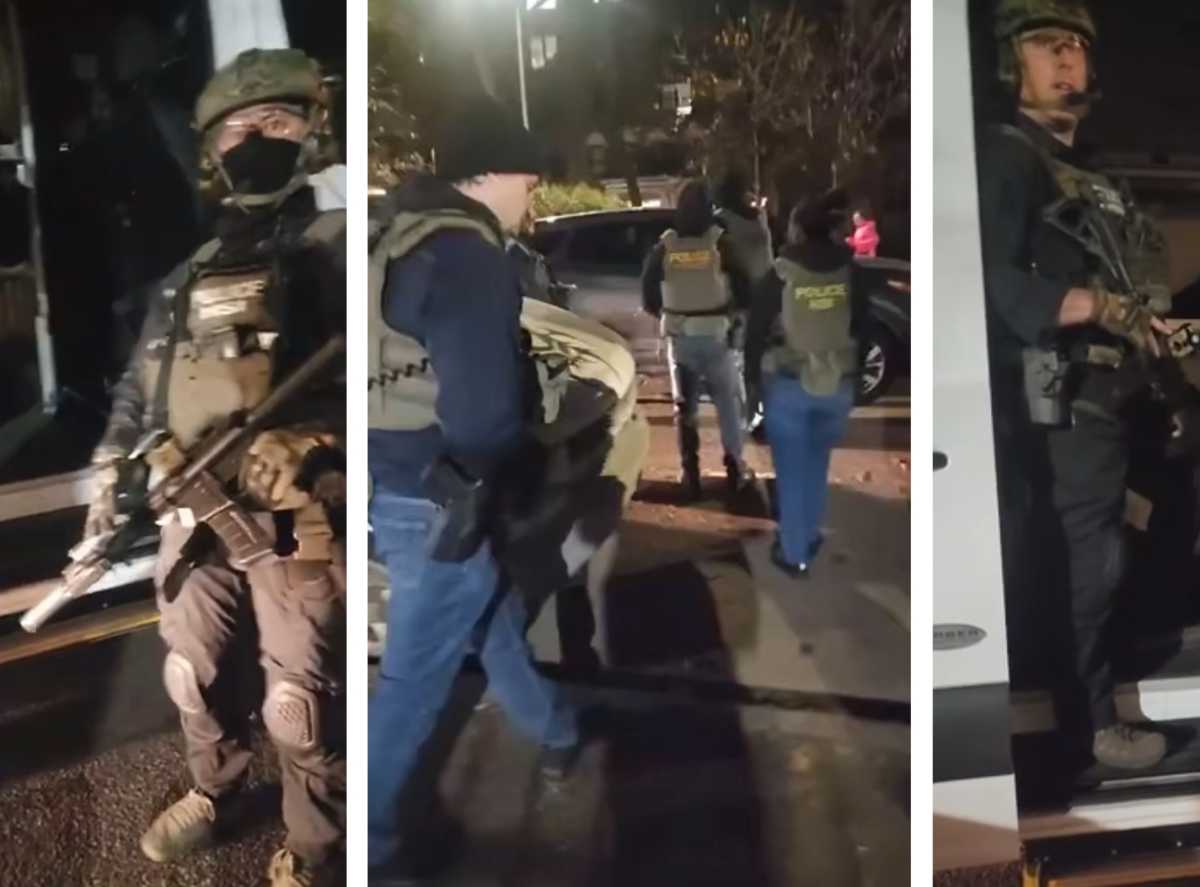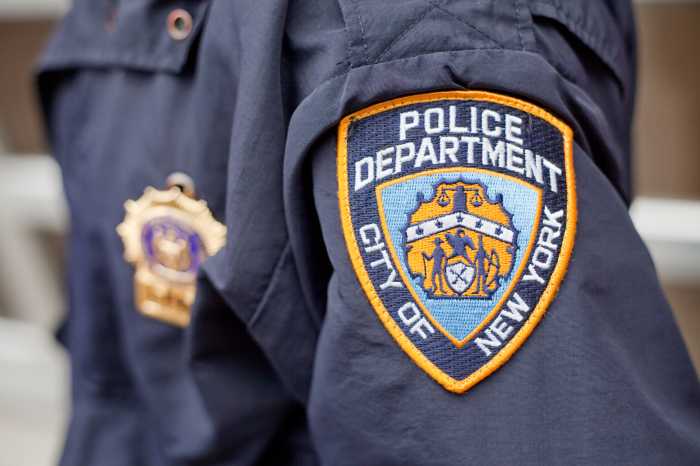Kew Gardens residents doubled down at an April 13 rally on their opposition toward Mayor Bill de Blasio’s plan to develop a new jail in the community as part of a criminal justice reform plan to close Rikers Island in the next decade.
Hundreds gathered on the steps of Queens Borough Hall to express their objection to the proposal which through the ULURP process will build a 26-story jail facility behind the Queens Supreme Court building in Kew Gardens, on the site of the Queens Detention Complex.
Dominick Pistone from the Community Preservation Coalition and a member of the Neighborhood Advisory Committee was just one of the speakers who lashed out against the administration for restricting meeting attendance and barring journalists.
“For those of you who thought there was supposed to be some community input on this, you’re wrong,” Pistone said. “From the beginning, [Mayor de Blasio’s] plan was to site the jails in places that had a courthouse and an existing jail. It was never his intention to seek input from the community about the sites. In fact, the mayor went so far as to say that since it’s a representative democracy, the representative can site the jail. Who’s that representative? The mayor.”
Pistone was referring to a March 27 meeting which was closed to the public but for several community leaders in which de Blasio defended himself against claims that he was being “dictatorial” in his approach to including communities.
“It’s a democratic process, it still has to go through a whole lot of hoops and I guarantee you it will go through further changes,” de Blasio said in a recording of the meeting obtained QNS. “In the end, we have a representative democracy where it’s our job to say, ‘This is what we think is a good policy for the city.'”
At Saturday’s rally, Pistone pointed out that the mayor had wanted the jail to be seen as a community asset rather than a burden, which the civic leader believed to be a quizzical notion.
Andrea Crawford, an outspoken member of the NAC, rejected the idea that criminal justice reform should include borough-based jails and insisted that the bail system should be abolished while more judges should be hired so more defendants receive speedier trials.
Candidate for Queens district attorney Gregory Lasak was just one of the speakers who opposed closing Rikers and cited an incident where convicted murderers were able to escape from the Queens Detention Center during its time in use.
“I dealt with the worst of the worst for the last 39 years, I mostly dealt with murderers. Back in the ’80s there were two murderers that escaped from the facility behind me. I was in charge of investigating how they escaped,” Lasak said. “They came out of the sixth-floor dormitory, they had fire hoses and bedsheets and they came down in the middle of the night … These are not escape-proof jails.”
Lasak is a retired supreme court judge who served in the Queens district attorney’s office under outgoing DA Richard Brown, who is stepping down in June due to health complications.
The facility at 126-02 82nd Ave. would detain the majority of incarcerated women in the city and include a maternity ward. It will be about 1.3 million square feet according to the draft environmental review.
Tyler Nims, executive director of the Lippman Commission convened by former Council Speaker Melissa Mark-Viverito to advise on the closing of Rikers, told QNS in an interview that the purpose of moving the jails to the boroughs was to keep detainees not only close to courthouses and reduce travel time from the island, but also to make family visitations easier.
A little-known organization called Neighbors Against White Supremacy made an appearance at the rally handing out letters calling opposition to the jail plan racist.
The NAC dismissed the group’s accusation of bias.
Community Board 9 will host a public hearing on the Kew Gardens Jail plan at 7 p.m. on Wednesday, April 24, at the Helen Marshall Cultural Center in Queens Borough Hall, 120-55 Queens Blvd., Kew Gardens.
Correction note: the name of one protestor has been removed over uncertainty regarding their identity.


